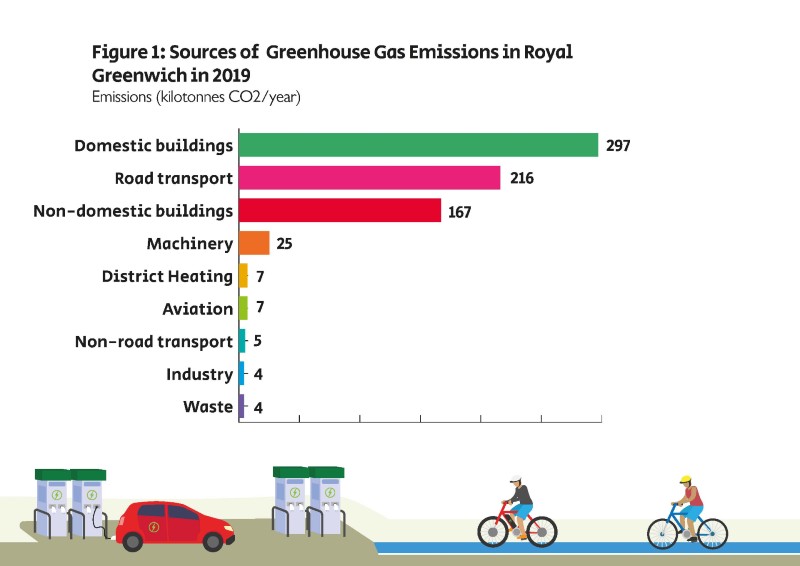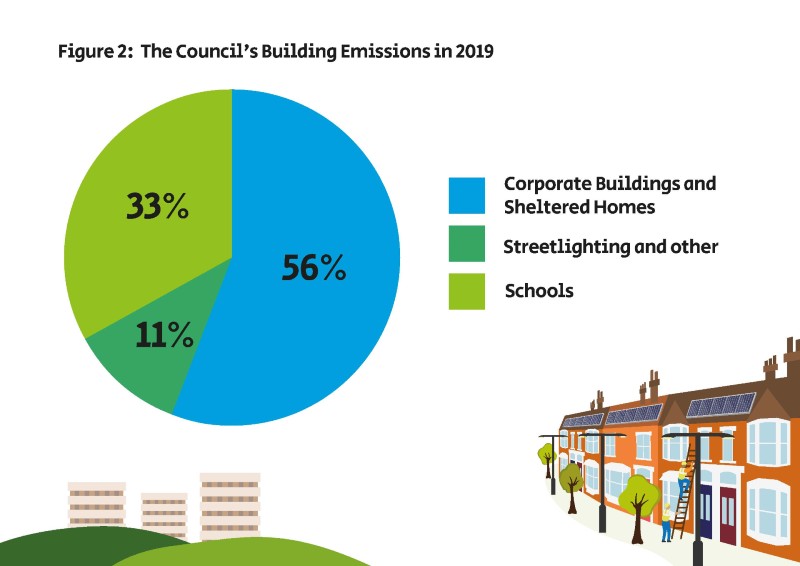Where are we now?
Why do greenhouse gas emissions matter?
The emission of greenhouse gases such as carbon dioxide, methane and nitrous oxide, occurs thanks to human activities like burning fossil fuels (for transport, heating, electricity generation, industrial processes), agriculture, and more. These greenhouse gases trap heat and make the planet warmer, causing climate change.
Human activities are estimated to have caused over 1.0°C of global warming above pre-industrial levels so far, and in order to limit this warming to 1.5°C, global carbon neutrality must be reached by around 2050.
Limiting global warming will require faster reduction of these greenhouse gas emission in developed countries like the UK; we have a responsibility to develop a low carbon economy and low carbon lifestyles, and the opportunity to enhance quality of life in the process.
-
The impacts of climate change because of human activity have caused around 1°C of global warming above pre-industrial levels so far, and the warming is likely to reach 1.5°C between 2030 and 2052 at current rates.
This has already led to more frequently extreme weather events, rising sea levels and the loss of nature. As the world's temperatures continue to rise, these drastic events will only worsen. The effects will impact fresh water supplies, food security, economic prosperity and biodiversity.
The long-term effects vary widely, depending on how much warming there is. For example:
- at 1.5°C of global warming, we can expect just one summer per 100 years in which there is no sea ice left in the Arctic
- at 2°C global warming, this scenario is likely to happen at least once per decade
- if sea ice melts, sea levels will rise rapidly and flooding will damage our homes and lives.
What does our Carbon Neutral Plan aim to achieve?
We aim to reduce emissions coming from our borough as far possible, and to very low levels. It also means doing what we can through our own activity to reduce emissions across London and beyond.
Our Climate Emergency Declaration is to be Carbon Neutral by 2030. We know this depends on levels of investment far in excess of current council budgets.
Sources of green house gas emissions in our borough
The largest sources of emissions in Royal Greenwich are the heat and electricity used in buildings, and the fuel used in road transport. The borough is estimated to have emitted 733 kilo-tonnes of CO2 equivalents in 2019.
A “Baseline” scenario shows that if we carried on with the policies in place today, our emissions would be expected to decrease by only 14% over the 10 years to 2030. Without additional large-scale action, natural gas boilers are likely to continue to provide 85% of building heating in Royal Greenwich in 2030, directly emitting carbon dioxide on-site. In the transport sector, despite the growing market share of electric vehicles, emissions in the borough are predicted to decrease by less than 10% between 2019 and 2030 if no significant additional action is taken.
Reducing emissions will need new technologies, changes to our behaviour and new infrastructure. Key changes likely to have a significant impact on the borough’s emissions in the short term include:
- increasing energy efficiency in buildings by installing insulation, controlling ventilation, improving glazing
- replacing gas boilers with efficient electric heating (such as heat pumps)
- reduced road vehicle use – both personal and commercial
- the uptake of low emissions vehicles, including electric cars.

Measuring direct and indirect emissions
-
The emissions directly arising in the borough, and emissions related to generating the electricity used in the borough, are referred to as Scope 1 and Scope 2 emissions.
-
There are also Scope 3 emissions. These are emissions that occur elsewhere but are due to the activity of residents and organisations within the borough. For example, emissions occurring outside the borough from producing food and manufactured products that are consumed locally. Flights taken by residents are another major source of Scope 3 emission.
Scope 3 emissions are of great importance, especially for London which has high levels of consumption and relatively little industry. Actions we can all take to reduce them include:
- eating less meat and dairy
- reducing how much we buy and how much we throw away
- flying less often.
Accurate measurement of Scope 3 emissions is complex. It depends on data about our own consumption and on production and transport activity outside of the borough. Scope 3 emissions are not measured in our reported carbon footprint. However, our Action Plan does address ways we intend to reduce Scope 3 emissions.
The council’s own emissions
Emissions from council-owned buildings, excluding council housing, have fallen by around 28% between financial years 2016/17 and 2019/20, and are estimated at 27 kilo-tonnes CO2e.
This is mostly because electricity production now produces less carbon per unit of electricity, due to the increased share of renewables and the replacement of coal fired power stations with gas fired power stations. Energy use per building has also fallen by a small amount.
Emissions from heat and electricity used in homes owned by the council are not included in the above but are significantly larger than the Council’s operational footprint. In 2019, these emissions were 9% of the total borough’s emissions (65 kilo-tonnes CO2e). For this reason, actions to reduce emissions from council housing are an important part of the carbon neutral plan.
